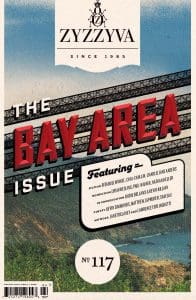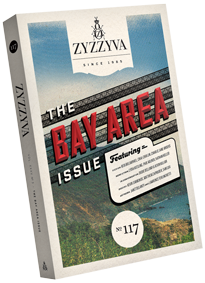One day in July I ran into a colleague on my way to lunch. We commiserated about the state of the world, briefly, and then he asked me if I’d been to the Flower Piano program at the San Francisco Botanical Garden yet. He said he’d just been, and that after one of the professional performers finished her set, a few of the people milling around took turns playing. One played David Bowie’s “Life on Mars,” singing softly under his breath. Another, a child of about ten, played a classical sonata, with astonishing beauty.
There’s still art here, he said with a half smile as we parted ways. We’re still here, I said in agreement.
It was only the second or third time someone had made a remark in that vein to me in the past few weeks.
There’s a palpable sense that the pressure on creative folks in the San Francisco Bay Area is nearly intolerable—a widespread and reasonable feeling that is nevertheless at odds with the exceptional density of people still doing creative work of the highest caliber here. There’s a sense that we’re all hanging on by our fingertips, and maybe only the fingertips of one hand, while the other hand continues writing, continues playing.
Will the region that has always been our home endure as a generative hub of literary and artistic innovation? I want to say, Of course it will. But nothing is a given. If we don’t make deliberate efforts to make the Bay Area a sustainable place for bakers and musicians, teachers and translators, poets and playwrights to live, we could see a major transformation, one that will incalculably diminish the fundamental identity of this place.
In the meantime, the pressure from the sense of transience and the precariousness of it all naturally filters in and shapes the work we’re seeing. As always, remarkable work can emerge from struggle and heartbreak, even from despair. We can celebrate that, but it’s impossible not to worry about the cost. Because on the other side of that coin, the less romantic side, is all the unseen, unknowable work that could have been, but was stifled by lack of opportunity and support.
At a concert at the Fox Theater in Oakland in August, I chatted with a neighbor. The conversation quickly turned to lament, as it so often does: he’s a San Francisco native, and grew up taking the N Judah out to Candlestick (more lamenting) to see the Giants play. He was living with family while searching for housing, he told me, and increasingly widening the search area. He paused and then said, “I’m not sure whether the Bay Area is really a place people live anymore. Maybe it’s more of a temporary place to be for a few years.” He was thinking of leaving the state entirely, maybe moving to Scottsdale, Arizona, so he could visit the Giants at spring training.
At times it seems there’s as much despair about the inevitability of this transformation as there is about climate change: the decline is so far advanced and powerful in its own momentum, and the problem so expansive and multiform, and the leadership necessary to tackle it effectively and efficiently so lacking.
But then I’ll find myself in a certain neighborhood, or in certain company, and somehow all that disruption seems muted or far off, as though the fog had cast a protective spell on that corner of the Bay.
And if it’s not a foregone conclusion, if such pockets of neighborhoods and community persevere, then we have to try to protect the culture that we still have.
With that in mind, and on the cusp of our 35th anniversary next year, we bring you an issue dedicated to this unique place. If for you, too, it sometimes feels that this transformation of home is already a fait accompli, I hope this sampling, drawn from the wealth of our local talent, from all stages of career and across genres, pushes back against that notion—and, in so doing, makes an eloquent case for all we stand to lose, and all we must invest in conserving.
Some of us are still here; others have left. Some are poised to go, reluctantly or bitterly or enthusiastically seeking new terrain. Amid the tension and pressure, amid the injustice and anxiety, art and literature endure and blossom in the Bay Area with uncommon ingenuity, vision, and persistence.


